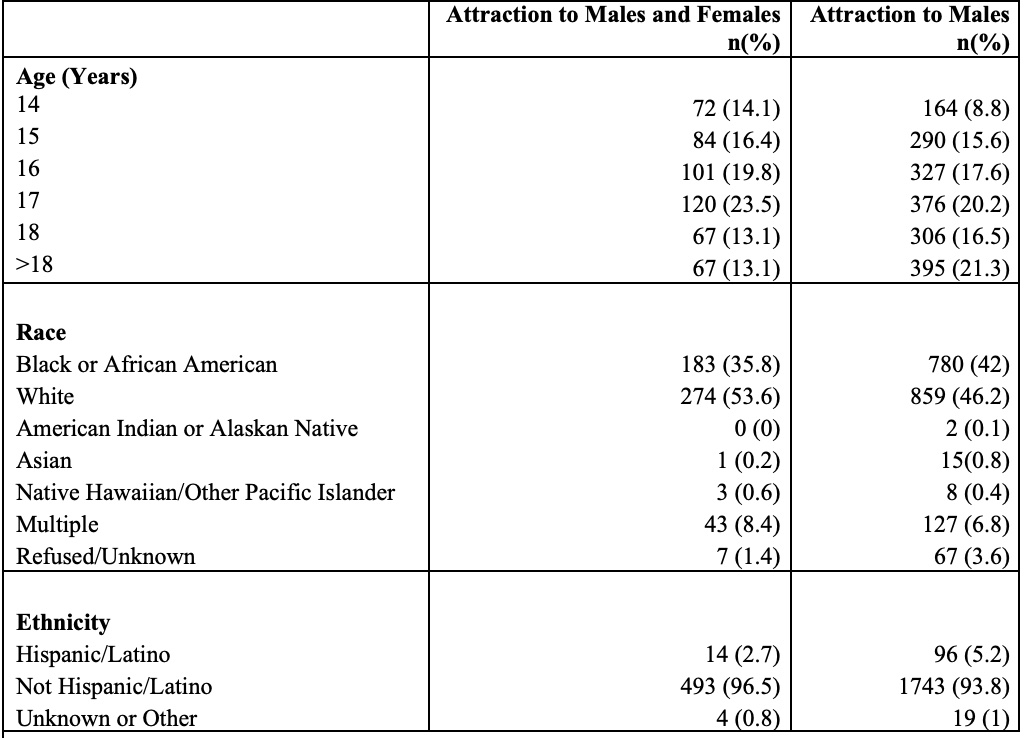Adolescent Medicine: General
Adolescent Medicine 1
443 - Does Attraction Matter? Sexual Behaviors and Contraceptive Choice in Adolescents
Publication Number: 443.1
- LM
Lauren Matera, DO (she/her/hers)
Adolescent Medicine Fellow
Nationwide Children's Hospital
Galloway, Ohio, United States
Presenting Author(s)
Background:
Both-sex attracted adolescents are an under-studied population. Prior research using survey data has shown that both-sex attracted adolescents have higher rates of high-risk sexual behaviors than their opposite-sex attracted peers. Limited data is available on contraceptive access and choice in this population.
Objective:
To compare contraceptive choice and sexual behaviors of both-sex attracted and opposite-sex attracted adolescents assigned female at birth presenting to a contraception clinic.
Design/Methods:
We conducted a retrospective chart review of adolescents assigned female at birth aged 14-24 years who presented for a first visit to a contraception clinic at a large children’s hospital from 2014 to 2020. Patients with no documentation of sexual attraction (n=129) or with attraction to only females (n=30) were excluded. Analysis was conducted on patients with reported attraction to both males and females (i.e., both-sex attracted, n=511, 21.6%) and patients with attraction to males only (i.e., opposite-sex attracted, n=1858, 78.4%). The primary outcome was contraceptive choice, dichotomized into long-acting reversible contraception (LARC) methods (IUDs and implant) and non-LARC methods (oral pill, transdermal patch, vaginal ring, injectable). Secondary outcomes included sexual behaviors: age at first sex, number of lifetime partners, condom use, history of a sexually transmitted infection (STI) and forced sex. Results were analyzed using Pearson’s chi-square and Wilcoxon tests.
Results:
2369 patients were included in this study. Both-sex attracted patients and opposite-sex attracted patients were similar in age, race, and ethnicity (Table 1). There was no difference in LARC vs non-LARC choice between groups (Table 2). Both-sex attracted patients reported a younger age at first sex (14.6 years vs 15.5 years, p < .05), more lifetime sexual partners (4.1 vs 2.8, p < .05), and a higher prevalence of forced sex (21.9% vs 8.8%, p < .05) compared to opposite-sex attracted patients (Table 3).
Conclusion(s): Approximately 1 out of 5 patients seeking contraceptive care reported attraction to both males and females. Both-sex attracted and opposite-sex attracted adolescent patients chose LARC and non-LARC contraception at similar rates. Both-sex attracted patients had more sexual risk behaviors, consistent with prior research. Contraceptive care clinics and providers should be inclusive in their approach to taking sexual health histories and providing counseling. Further research is needed to explore the association between sexual attraction and sexual behaviors to identify and address possible disparities.

.png)
